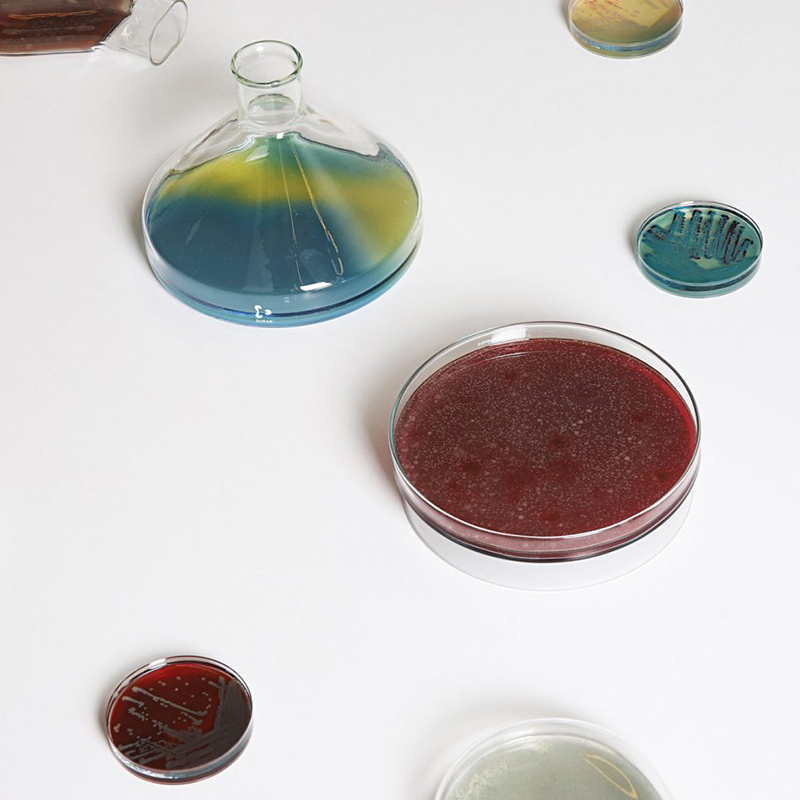Swedish designer Jan Klingler has created unusual lamps: bacteria live in them, which color the light in different shades. For this project, the designer had to do a lot of research and gain relevant experience, but now he can control the growth of bacteria so as to “grow” the desired color or pattern in his lamp bulbs.

To create these lights, Klingler himself grows bacteria, fungi and yeast, allowing them to grow naturally on a resin disc for 24 to 48 hours. Its “home” bacteria feed on agar-agar, a gelatin obtained from seaweed. At the beginning of the process, the culture medium becomes liquid, but by the time Klingler adds bacteria to grow, it begins to solidify.

The colors are provided either by food or by the bacteria themselves, for example, the serratia bacterium (such as live in the human mouth) gives an orange-red color. When the desired effect is achieved, the biomaterial discs are sealed to deprive the cultures of oxygen and stop their growth. The resin plates are then connected to the LED disk or module. It turns out that light is poured through a translucent layer of bacteria.

Bacteria lamps are manufactured entirely in Sweden and come in four variations, reminiscent of laboratory equipment. One is inspired by a Petri dish, one is a Collet flask that looks like a flattened light bulb, and two are made in the shape of a Fernbach flask in two sizes.

According to Klingler, the project challenges the user to “see a new connection between the object he created and himself, creating a visible connection through bacteria, shedding light on what we think should remain hidden, and exposing it to the public.”

Klingler clarifies that every living creature and even its place of residence has its own unique microbiological imprint. Combining science, art and industrial design, his Bacteria lamp harnesses this tangible fact to present a unique piece to the world, provoking thought and discussion.
The goal of the designer is to offer in the future personalized lamps made to order from biological samples of a specific client who wants to perpetuate himself in this way and make a part of himself a piece of contemporary decorative art.